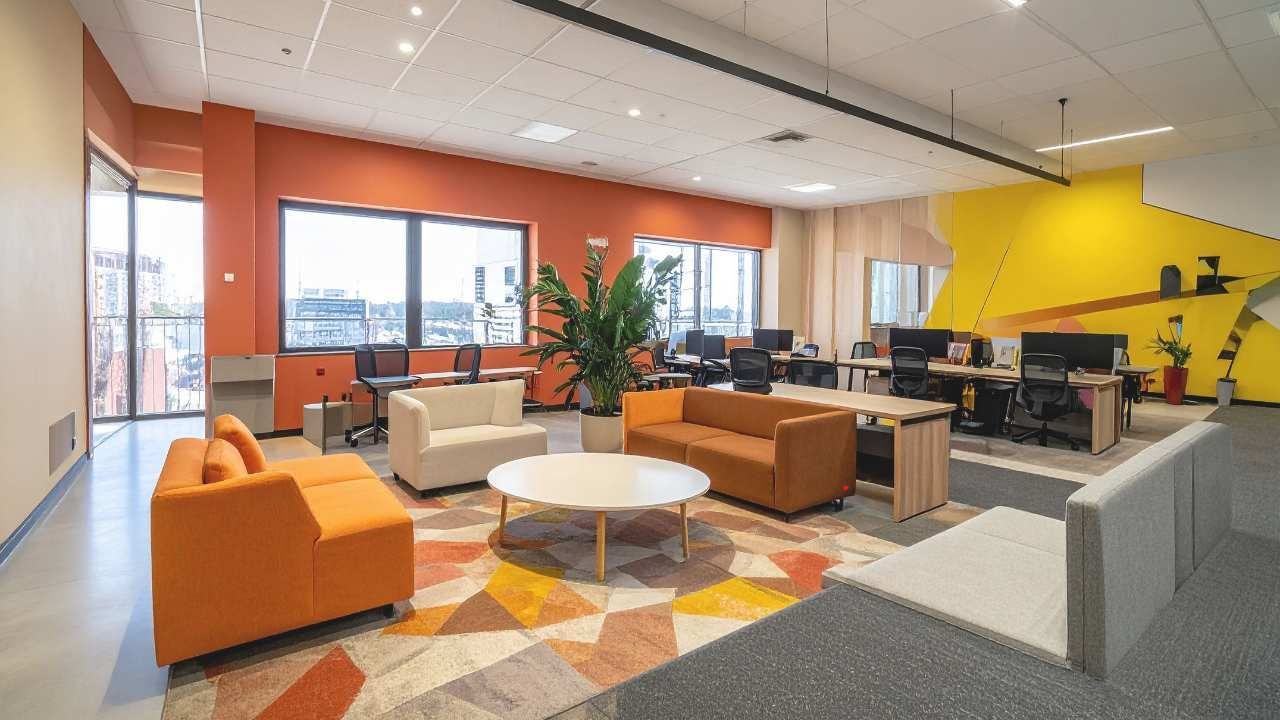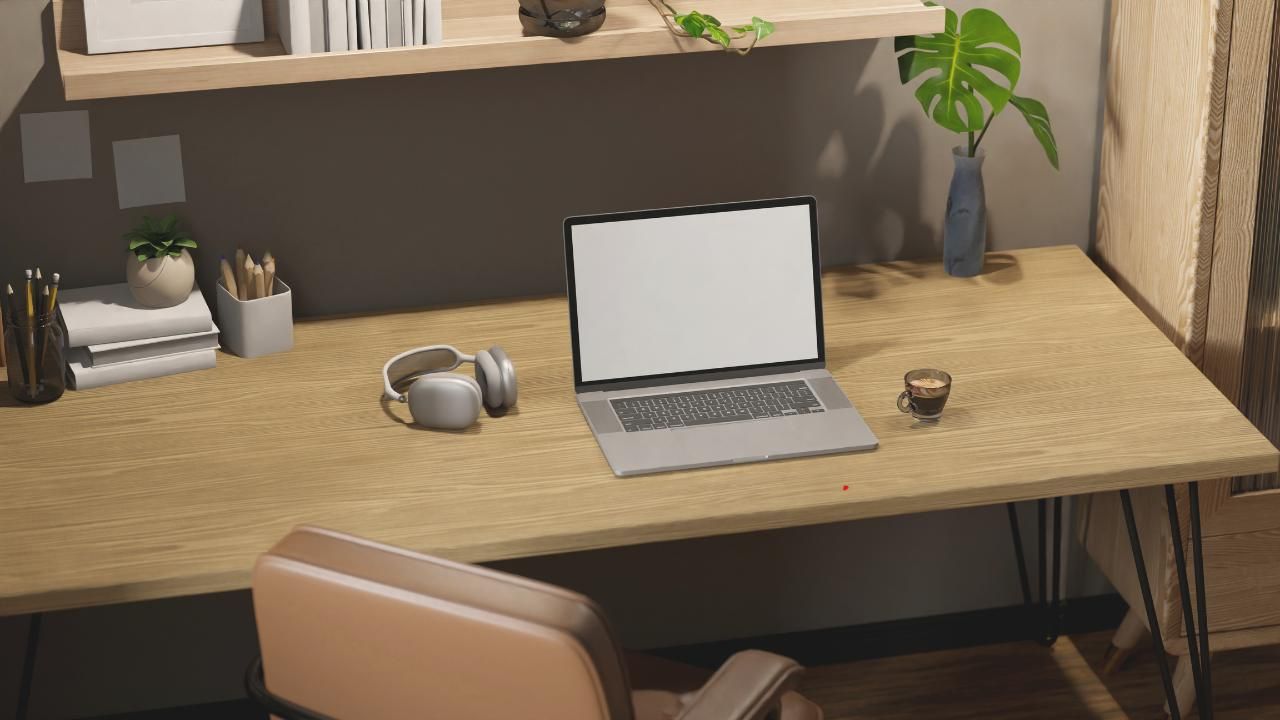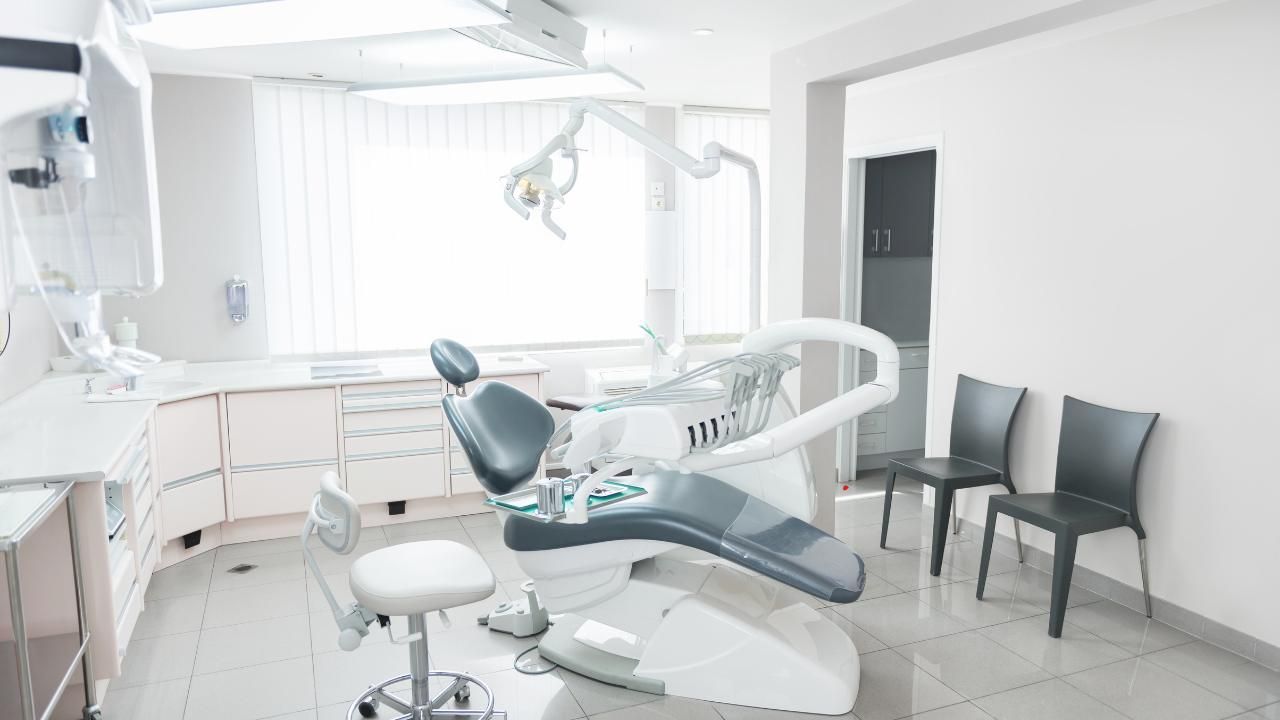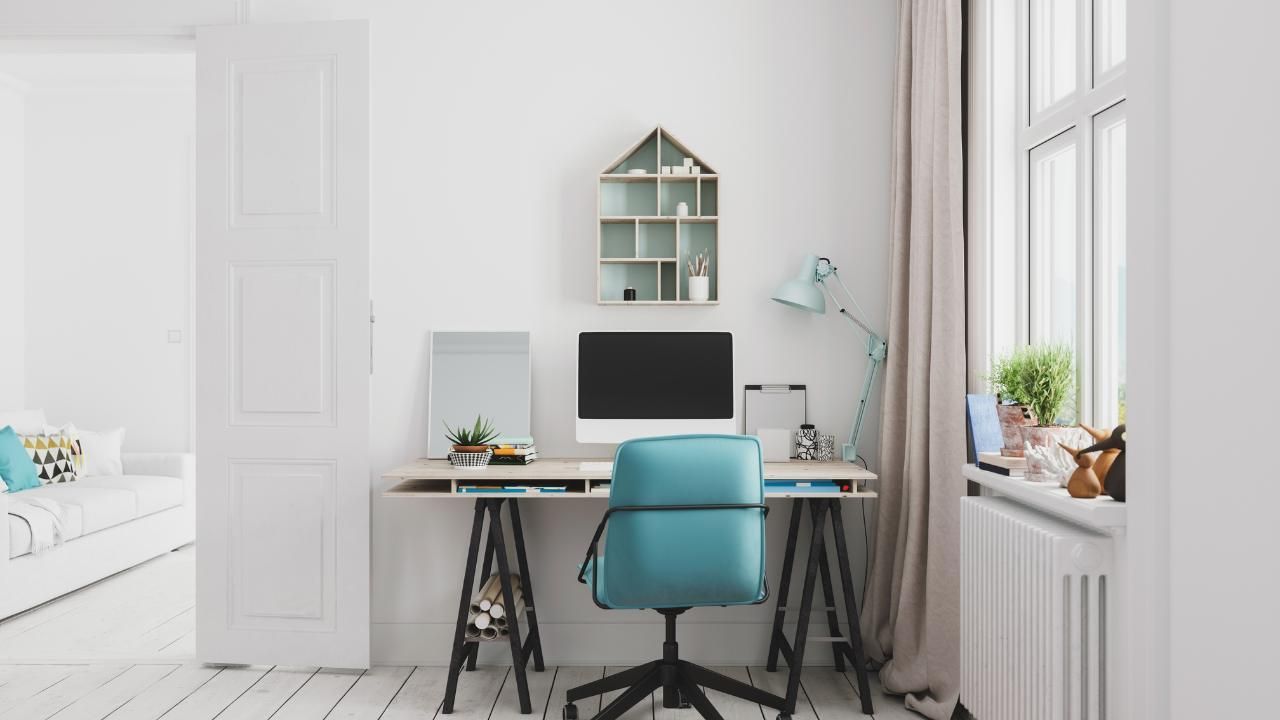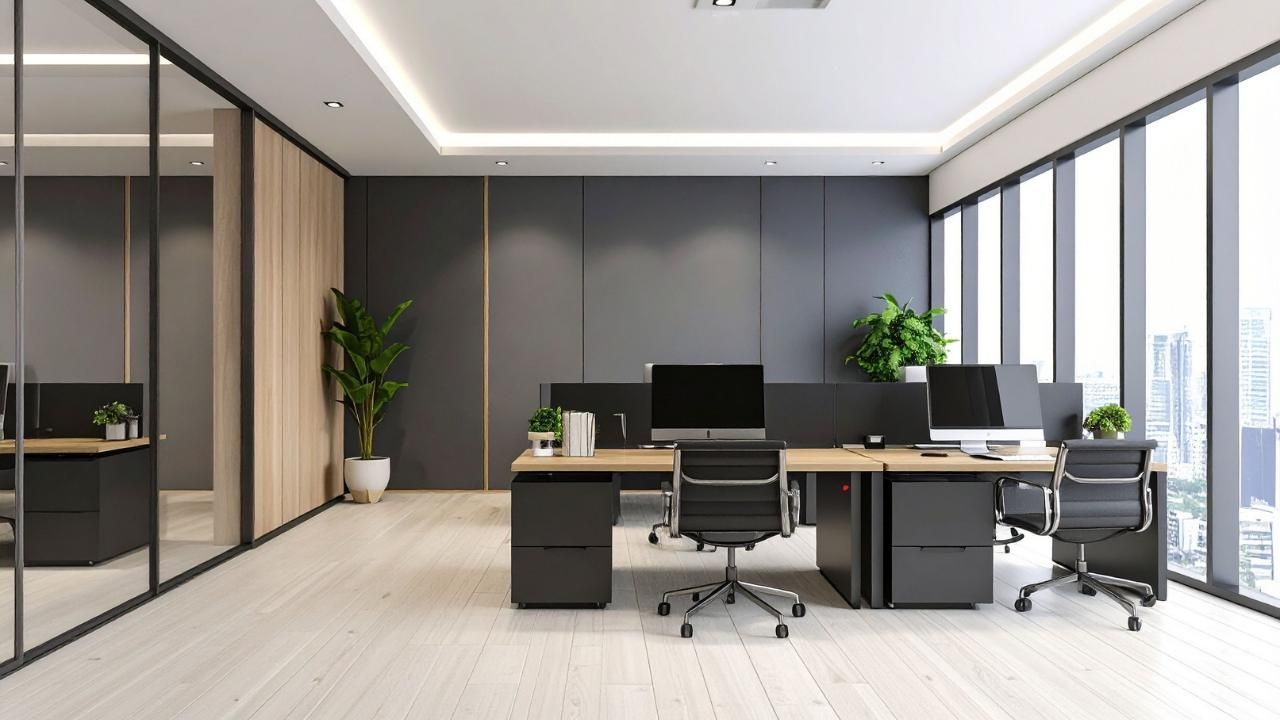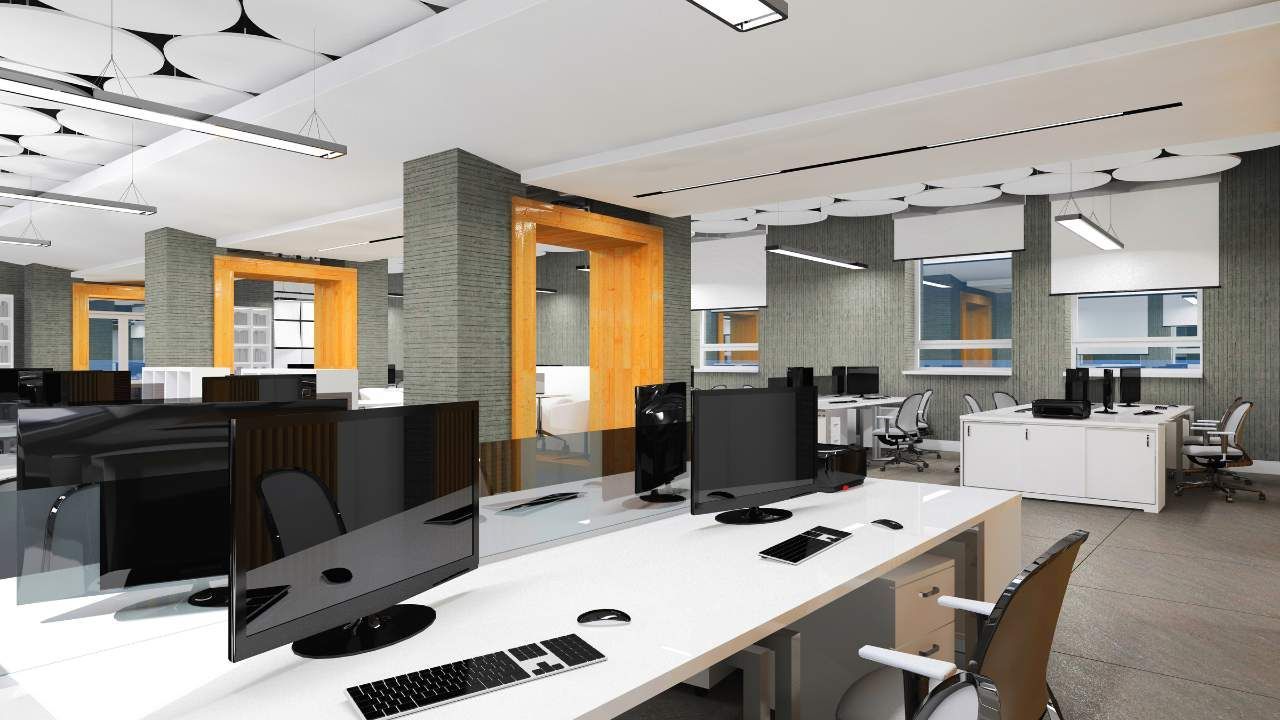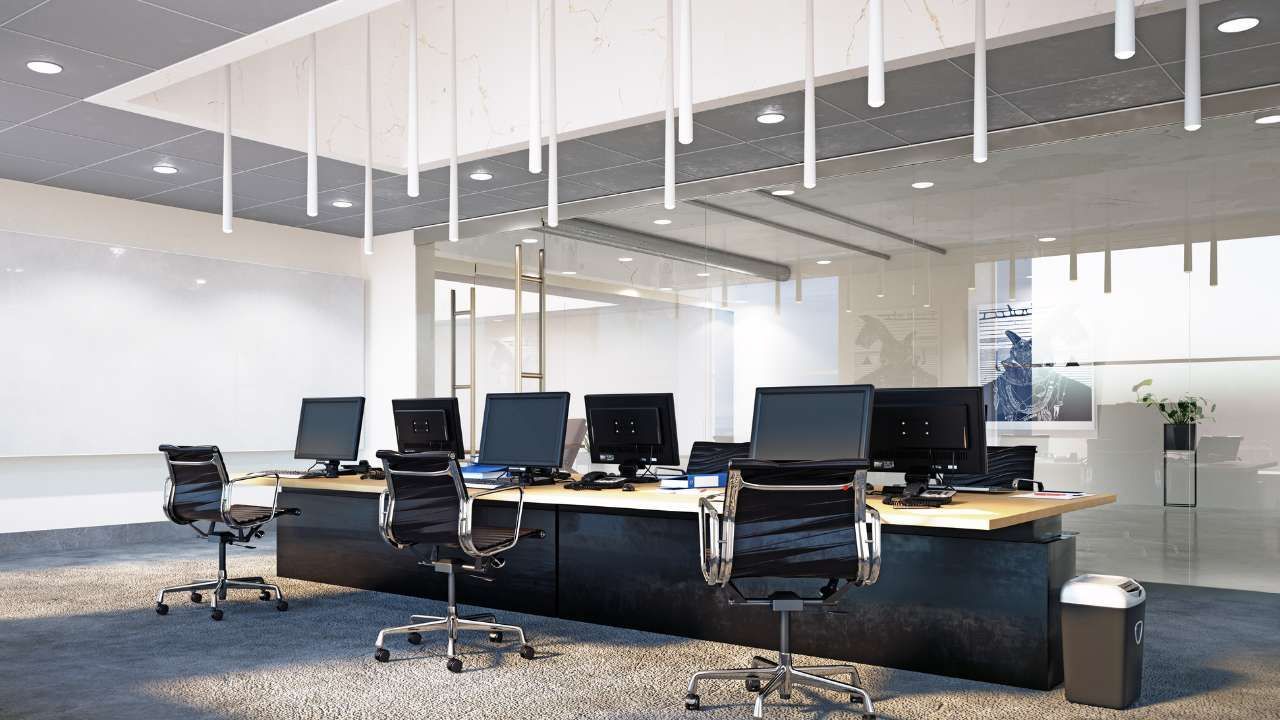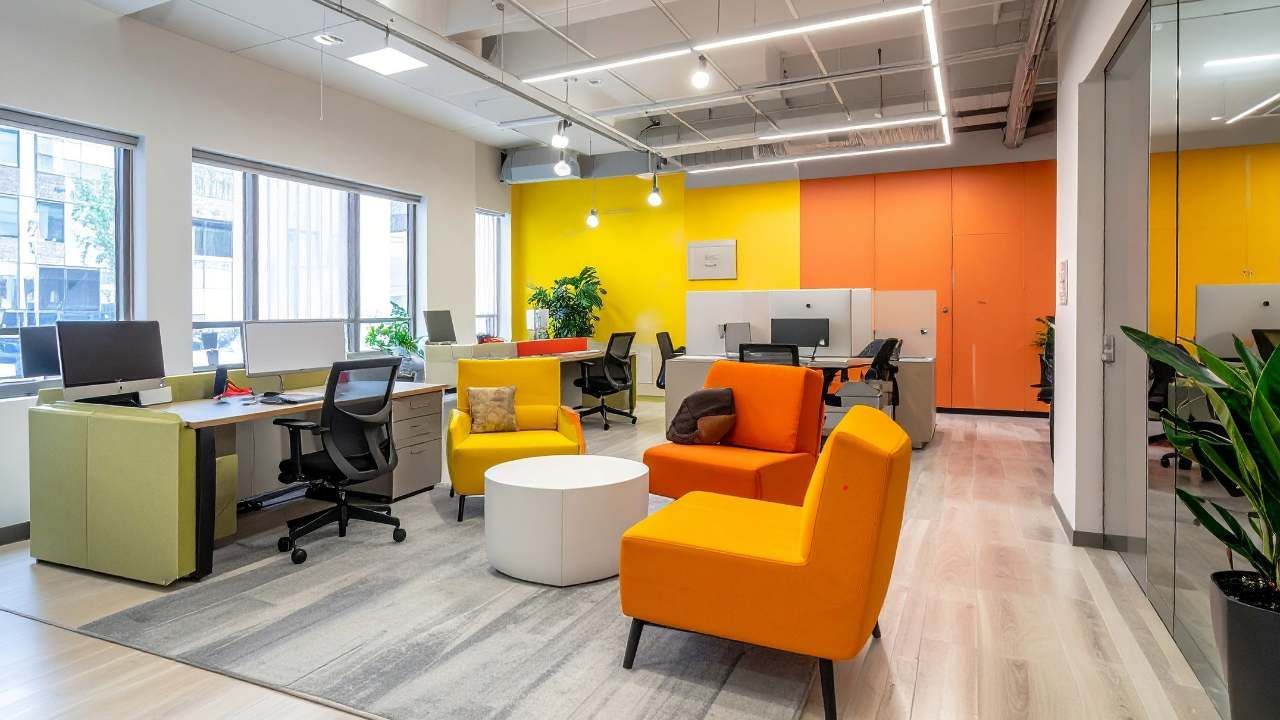Balancing Aesthetics and Functionality: Tips for Practical Office Design

In the ever-evolving landscape of modern workplaces, the synergy between aesthetics and functionality is the cornerstone of an effective office design. Striking the right balance not only creates visually appealing workspaces but also enhances productivity and employee well-being. In this comprehensive guide, we explore practical tips for achieving the perfect equilibrium between aesthetics and functionality in office design.
Understanding the Harmony: Aesthetics and Functionality in Office Design
Aesthetics: Elevating the Visual Appeal
- Color Palette Selection. Harmonious Hues: Choose a color palette that reflects your brand identity while promoting a sense of calm and focus. Consider incorporating pops of energizing colors in collaborative areas to foster creativity.
- Strategic Lighting. Natural Illumination: Maximize natural light whenever possible to create an inviting atmosphere. Complement it with adjustable artificial lighting to accommodate different tasks and moods throughout the day.
- Branding Elements. Company Culture Integration: Infuse the office with branding elements, such as logos, colors, and mission statements, to reinforce company culture. Custom graphics and wall art can serve as visual reminders of shared values.
- Biophilic Design. Bringing Nature In: Incorporate elements of biophilic design, integrating plants, natural textures, and outdoor views. This connection to nature has been proven to reduce stress and enhance overall well-being.
Functionality: Enhancing Practicality
- Flexible Furniture Arrangement. Adaptable Spaces: Invest in modular and flexible office furniture that can be easily rearranged to accommodate changing needs. This flexibility promotes collaboration and ensures the space remains dynamic.
- Ergonomic Solutions. Prioritizing Comfort: Opt for ergonomic furniture to support the health and well-being of employees. Adjustable chairs, sit-stand desks, and proper lighting contribute to a comfortable and productive work environment.
- Storage Solutions. Clutter-Free Zones: Implement efficient storage solutions to keep the workspace organized. This includes filing cabinets, shelving units, and multifunctional furniture that maximizes storage without compromising aesthetics.
- Technology Integration. Seamless Connectivity: Conceal cables and outlets for a streamlined appearance. Invest in technology that enhances collaboration, such as video conferencing tools and interactive displays, without disrupting the visual harmony.
Designing Office Layouts to Encourage Efficient Workflows and Collaboration
Designing office layouts to foster efficient workflows and encourage collaboration is crucial for creating a productive and dynamic work environment. Here are key considerations to optimize office layouts for teamwork and streamlined processes:
- Open and Collaborative Spaces: Integrate open workspaces that promote visibility and accessibility. Removing physical barriers enhances communication and allows team members to easily collaborate on projects.
- Dedicated Collaboration Zones: Create specific areas within the office designed for collaboration. Whether it's meeting rooms, breakout areas, or collaborative workstations, these zones should be strategically placed to encourage spontaneous interactions and idea-sharing.
- Flexible Furniture Arrangements: Utilize modular and adaptable furniture that can be easily rearranged to accommodate different team sizes and project needs. Flexibility in furniture arrangement promotes a dynamic workspace that supports various workflows.
- Technology Integration: Ensure seamless integration of technology tools to facilitate communication and collaboration. Incorporate interactive displays, video conferencing solutions, and collaborative software that enhance connectivity among team members, whether they are in the office or working remotely.
Ergonomic Considerations When Selecting Office Furniture
Selecting ergonomic office furniture is paramount for enhancing employee comfort and productivity. Consider the following ergonomic considerations when choosing office furniture to create a workspace that prioritizes well-being and efficiency:
- Chair Design: Choose chairs with adjustable features such as seat height, lumbar support, and armrests. The chair should provide proper support to the spine, promoting good posture and reducing the risk of musculoskeletal issues.
- Desk Height and Design: Opt for desks that allow employees to maintain a comfortable sitting or standing position. Adjustable desks accommodate individual preferences, promoting a healthier work posture and reducing strain on the back and neck.
- Monitor Placement: Ensure that computer monitors are at eye level to prevent neck strain. Adjustable monitor arms or stands can help achieve the optimal viewing angle, reducing the risk of eye fatigue and discomfort.
- Keyboard and Mouse Position: Provide ergonomic keyboards and mice to support natural hand positions. Consider accessories such as keyboard trays to allow for proper alignment of wrists and arms, reducing the risk of repetitive strain injuries.
- Task Lighting: Implement adjustable task lighting to reduce eye strain. Proper lighting helps employees focus on their tasks and minimizes discomfort caused by glare or shadows.
- Foot Support: Consider footrests for employees who may benefit from additional support. This is particularly important for shorter individuals or those who prefer a slightly elevated foot position.
- Storage Accessibility: Ensure that storage solutions are easily accessible to prevent unnecessary stretching or bending. Adequate and well-organized storage minimizes the risk of strain and enhances overall efficiency.
Practical Tips for Balancing Aesthetics and Functionality
Employee Input
- Inclusive Design: Gather input from employees to understand their preferences and needs. Inclusive design ensures that the office caters to a diverse range of working styles and requirements.
Zone Planning
- Task-Oriented Zones: Divide the office into zones based on tasks and activities. Create dedicated areas for focused work, collaboration, and relaxation. Each zone should seamlessly integrate aesthetics with the functionality required for its purpose.
Adaptability for Growth
- Scalable Designs: Anticipate future growth and changes in office dynamics. Design with scalability in mind, allowing the workspace to evolve without compromising its aesthetic coherence.
Well-Defined Circulation
- Efficient Traffic Flow: Ensure a well-defined circulation pattern that facilitates easy movement. Avoid overcrowded areas and bottlenecks, promoting a smooth flow that aligns with the overall design aesthetics.
- Sustainable Practices. Green Design: Incorporate sustainable design practices that not only benefit the environment but also contribute to a positive aesthetic. Use recycled materials, energy-efficient lighting, and sustainable furniture to create an eco-friendly workspace.
Consulting with Office Design Professionals
Achieving the delicate balance between aesthetics and functionality often requires the expertise of professional office designers. Collaborate with experienced designers who understand the unique needs of your organization and can translate your vision into a workspace that harmonizes beauty with practicality.
The integration of aesthetics and functionality is the essence of a well-designed office space. By thoughtfully integrating color palettes, branding elements, flexible furniture, and ergonomic solutions, businesses in Tippecanoe can create work environments that inspire creativity, foster collaboration, and enhance employee satisfaction. Connect with us and strive for a workspace that looks impressive and works seamlessly to support the diverse needs of your workforce. Balancing aesthetics and functionality isn't just a design philosophy—it's a blueprint for success in the modern workplace.

